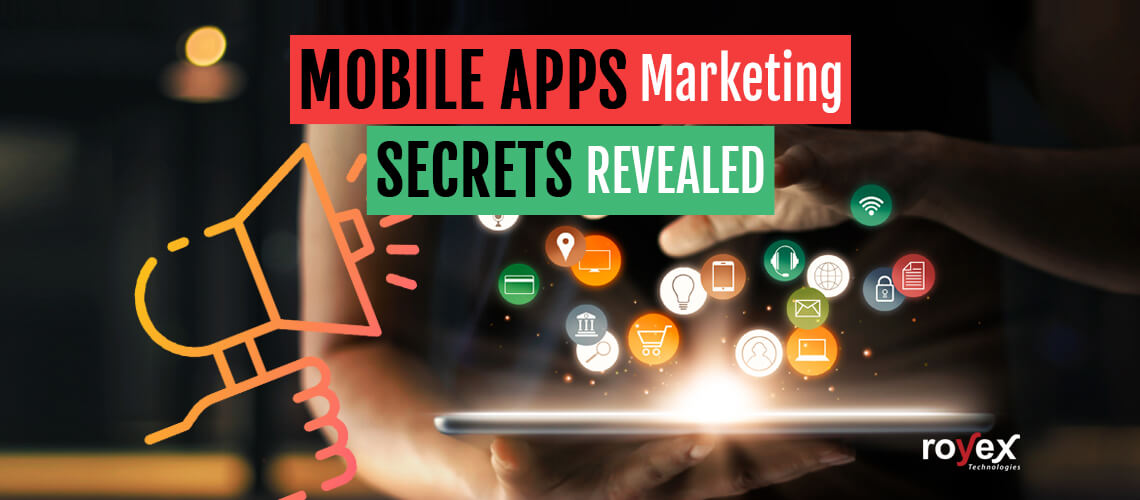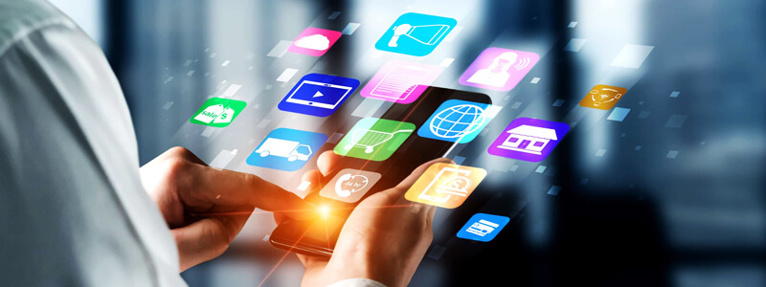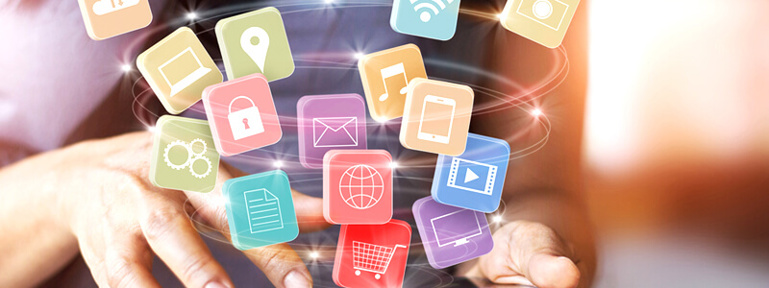
Mobile Apps Marketing Secrets Revealed
Are you informed of how to market your mobile apps? Is it still feasible to attract tens of thousands of users to download your app if there are already tens of thousands of other applications in your niche? Absolutely.
We'll explain how to market a good app that people will rapidly download and use in this in-depth guide on mobile app marketing.
You'll need more than a mobile-friendly website to capture the attention of smartphone users. You'll need a mobile application.
With over 70% of the world's population owning a smartphone, it's clear that apps are the way of the future for mobile marketing.
What is Mobile App Marketing?

Interacting with your consumers throughout their whole lifetime — from when they first hear about your app to when they become devoted and frequent users — is what mobile app marketing is all about. To achieve this successfully, you must first determine who will use your app, where to locate them, what to say to them, and what they expect from you.
Mobile app consumption is sometimes thought of as a series of steps or "funnel." There are several steps to a funnel, but this is a simplified one
The initial stage in a user's encounter with your app is acquisition. So, in the first place, how do you get people to download and install your app?
The next step is activation. The specific definition of "user activation" varies with each app. Still, in general, it refers to a user's first activities, such as entering their email address or making their first purchase.
Turning your app into a frequent destination for your user is what retention is all about. The funnel notion is valuable as a model, but users frequently go back and forth between stages; therefore. Still, this is also known as the "mobile engagement loop."
Each level necessitates distinct methods and approaches, all of which are necessary for a successful mobile app marketing plan.
Mobile App Acquisition

Getting users to use your app is, of course, the first step in creating a successful app. Next, you must persuade a potential user that your app can address an issue they are experiencing from a messaging standpoint. The following are some of the most frequent ways to convey these messages:
Social: One of the most often used methods of app acquisition. Paid social advertising, in particular, is likely to be the most successful route unless you already have a huge audience. Once your app has gained popularity, persuading users to engage their friends as users is an even more successful method.
Search ads: Both Google Play and Apple's App Store provide in-app advertising that app developers may use to increase downloads. Adverts occur when users search for certain app keywords — for example when a user searches for "send money," ads for mobile payment applications may display. Search advertising may also be sponsored through platforms like Google AdWords.
Cross-promotion of apps: If you have many apps, using one to promote another is an excellent approach to get users. Suppose your company, for example, creates a restaurant database. In that case, you may place advertising in it referring to your travel app because customers interested in one may also be interested in the other.
Listing on the app store: Every app must have a written and image description in the app store. It's crucial to craft your listing to persuade consumers to download it carefully. The wording in your listing has an impact on whether or not consumers will notice it while searching for applications in your category, among other things.
In determining an acquisition strategy, it’s important to keep track of your cost per acquisition, or CPA. Some channels — like your app store listing, a web page, or organic social posts — don’t cost anything but are time-consuming. Others — like paid ads — can be expensive but are easier to optimize and scale. Determining the right balance of acquisition activities is critical for the long-term success of your app.
Comparing the CPA to the lifetime value of your customers will tell you whether an acquisition strategy is worth the money and time you’re putting into it. And the lifetime value calculation depends heavily on whether you can activate and then retain the users you’re acquired.
Mobile App User Activation

After a user has downloaded your app, you must convince them to utilize it because most users quit applications soon after downloading them; having an effective message strategy that reminds users how to use your app and why is critical.
Of course, the effectiveness of these techniques is contingent on your user having received the message you're sending. You have three primary app channels to choose from, and choosing the proper one may greatly enhance the chances of that occurring.
Channels for Mobile Apps
A push notification is a common channel of communication. You may send one at any moment after a user installs your app; your user doesn't even have to be in the app to view it. Push notifications are simple to customize, and you can even define actions for users to perform with just one press.
In-app messages are similar to push notifications in that they are sent to users while they are actively using your app. However, you may include real-time updates, and unlike push alerts, they don't require opt-in to receive.
The message center is a non-active channel within your app that allows users to view previous alerts if they are interested. It's a fantastic method to send notifications that don't need immediate action, and it's especially handy if a user is already in your app.
Each of these channels is best for distinct types of user activation.
User Activation Strategy
A welcome message is a push notification that is issued within 24 hours after the first installation. Thanking the user for downloading your app and then reinforcing the app's value proposition or introducing them to a major feature is a tried and true strategy. If a user installs a home automation app, for example, you can send them a push message thanking them and providing a link to begin the process of configuring their house in your app.
Successful app marketers go a step further and create an onboarding sequence for their users. Having an effective onboarding flow takes the user on a tour of the product, pointing out important features and explaining when and how to utilize them. Onboarding that is well-thought-out boosts engagement and creates trust, making it simpler to ask for permission to send notifications and other communications.
Getting app users to register with their phone number or email address is highly beneficial for future marketing efforts. This will aid cross-channel marketing efforts and provide you with another channel to interact or re-engage your user.
It may be fair to provide a conversion incentive upfront, depending on your app. If your app allows users to buy clothing, for example, give them a limited-time coupon to encourage them to shop through your online channel.
After you've activated your user, consider how you'll retain them as a user in the long run.
Mobile App Retention

Keeping your users engaged is a long-term endeavor; retention is particularly essential because it is a significant element in determining a customer's lifetime value. Therefore, whether or not your efforts were successful.
Consider the following situation:
- 1,000 new users, 10% of whom stay for an average of one month, and
- 500 new users, 50% of whom stay for an average of two months
In the first scenario, your 1,000 new users decrease to 100, then half of them leave within a month. That's a total of 50 net users.
In the second, your 500 new users have shrunk to 250, and just a quarter have gone after a month. That's 125 net users, which is more than double the amount in the previous case, even though you only got half as many in the first place.
User Retention Strategies
Discounts: Sending users discounts or coupons for goods they're interested in is a great way to keep them coming back. Retail, travel, and local applications benefit the most from them. Use what you know about the user's previous interests — possibly even what's in their cart — to get them back into the app.
Unique content: Can you give a complete guide on your niche that the app is based on and only available through the app?
Messages that stand out: Inform users about a new update or upgrade and show them how to use it. Let consumers know, for example, if you recently added the option to share playlists from your music app on Twitter.
Personalization: You've undoubtedly learned a lot about your users after they've been using your app for a time. Can you apply what you've learned to make your app more useful? Send users a push notification asking them to check their new selections if you've just relaunched your recommendation engine, for example.
Better connectivity: Friends and family who have joined are updated. LinkedIn and Facebook have become so popular that they allow users to search for individuals they know on the platforms. And by delivering updates, they keep them coming back. Tell your users how many of their friends have joined since they last used your app.
Royex Technologies, a leading Mobile App Development Company in Dubai, can turn your reality into a dream. We are experts in mobile app development and can develop any kind of app that you want. Just share with us your requirements and specifications and we'll do the rest. Feel free to call us at +971566027916 or mail us at info@royex.net, and we can send you a proposal based on your idea.





